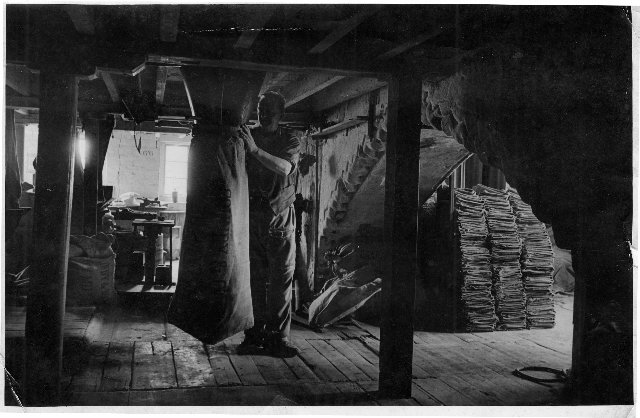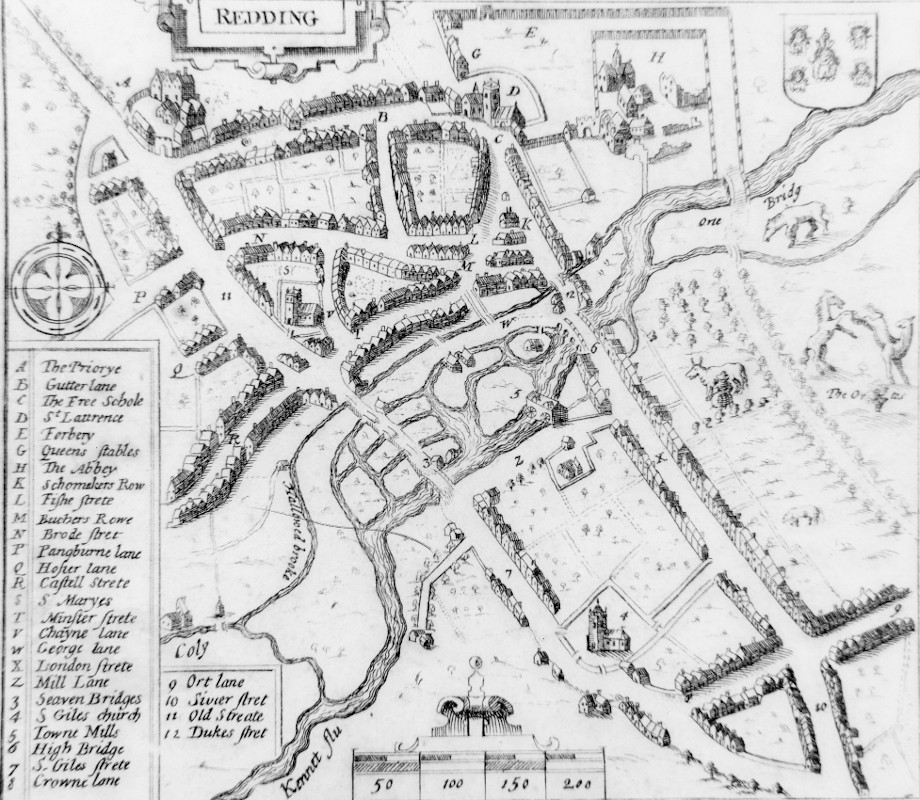A town transformed by a church
Reading's name is Anglo-Saxon and means the home of 'Reada's People'. The town first appeared in the historical record at the time of a Viking invasion in 870-71AD. By the 11th century, the settlement was sited on a ridge beside the River Kennet to the south, and overlooking the flood plain of the River Thames to the north. The settlement had a church and a mint. In 1086, the Domesday Book records that Reading had grown into a town and was a royal borough.
A hundred years after the Domesday Book, Reading had become a significant town. What caused this transformation?
Founding of Reading Abbey
The event that altered Reading's fortunes was in 1121, when King Henry I (the son of William the Conqueror) founded a large monastery at Reading. He gave the town and a large amount of land to the new abbey. Such monastery-building was common in the twelfth century; King Henry founded several, as did other wealthy people. However Reading Abbey was different, as Henry intended it to be his burial place, so it had to be fit for a king. Henry was buried in the Abbey church in 1136, but it wasn't completed until 1164.

Reading Abbey Mill in 1949. At this date the mill on the site of the old abbey mill was known as Soundy's Mill. Despite the name change, the scene in this striking photograph would have changed little since medieval times. (REDMG : 2001.413.27)
A growing town
What had been a small town was suddenly a growing, bustling place, dominated by the abbey church. Important visitors made periodic visits - the King and his court and, on several occasions, parliament met in Reading. The presence of the abbey significantly altered the economic situation of the town too. Running a monastery costs a lot of money. The abbey owned much of the land around the town. It also had the right to run a market in the town centre - and everyone who used the market to sell goods had to pay a tax. Boats travelling up the River Kennet had to pay a tax too. Similarly, farmers who used the abbey mill to grind their corn had to pay a fee. The Abbot of Reading became the most important man in the town - a situation which later caused trouble with the townspeople, who sometimes disagreed with his decisions and taxes.

John Speed's fascinating map of 1610 is the first map of Reading. It shows a town which was probably the same size and triangular shape as it had been in the fourteenth century. (REDMG : 1931.25.1)
The domination of the abbey in the town
The domination of the abbey can still be seen in the layout of the town. Before the abbey was built the town was clustered around St Mary's church. That is where the market would have been. The road from London (now called Southampton Street) dropped down one side of the Kennet valley, crossed the river, and approached the market area. When the abbey was built, the market was moved to just outside the abbey gates - to the small open area that is now known as Market Place. A new road (London Street) now ran down the side of the Kennet valley to bring travellers to the new market. The abbey and St Mary's church were linked by Broad Street. These three streets - Southampton Street, London Street and Broad Street - gave Reading a roughly triangular shape. The heart of Reading lay in the Market Place, just outside the abbey.
The next stage will explore Reading's transformation from market town to railway town.





